Nanzenji Temple (南禅寺) is one of Japan’s many historic and majestic spiritual sites that harkens back to its history. Nestled in the Higashiyama Mountains, this Zen Buddhist temple is one of the more important hallowed places of the country. It incorporates several sub-temples to create one of the largest complexes of temple buildings in Japan.
The whole complex is about ½ mile-long by nearly a ⅓ mile wide. There are plentitudes of gardens, ponds, structures, and other natural formations that provide a breathtaking view all year round.
However, it’s most impressive during the autumn months. It’s a treasure trove of historic and artistic artifacts steeped in spirituality and mysticism.
Nanzenji Temple Location Via Google Maps
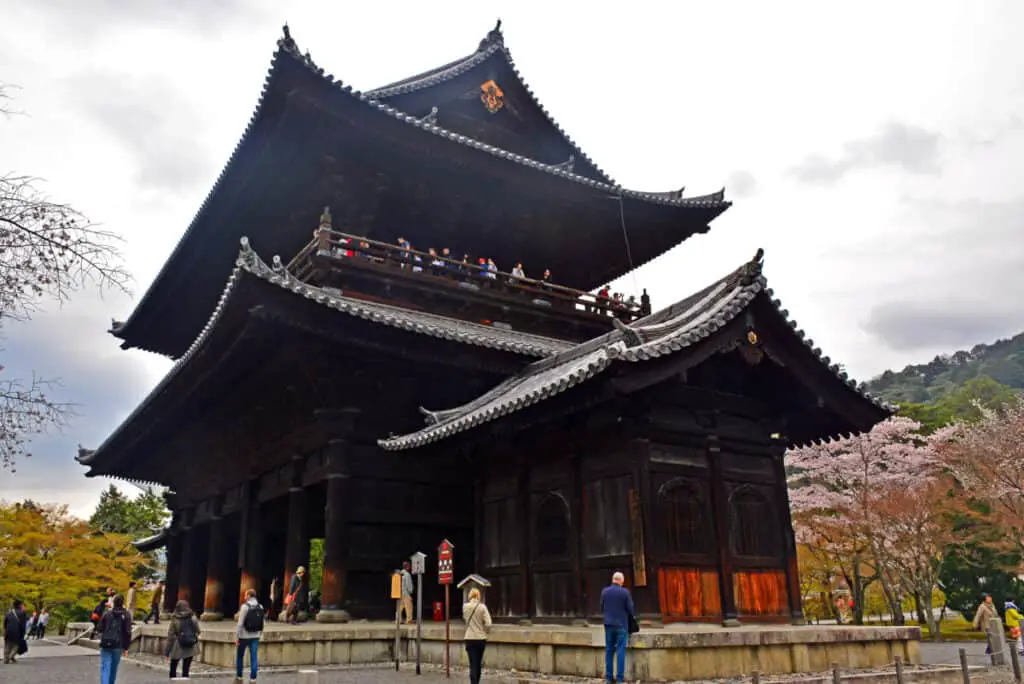
Tour Overview
- History of Nanzenji Temple
- Legends of Ghosts
- Transformation into a Buddhist Temple
- It’s a Symbol of Defiance
- Shrouded in a Violent Past
- Nanzenji Temple Complex Today
- The Sanmon Gate
- Performance Inspiration
- The Hatto
- The Hojo
- An Impressive Aqueduct
- A Brief Exploration of the Sub-Temples
- The Sanmon Gate
History of Nanzenji Temple
13th Century emperor, Kameyama built Nanzenji as a retirement villa and it became a Zen temple during the Muromachi Period (1333 to 1573). Of all the buildings there, the oldest one didn’t come into existence until after this time.
Legends of Ghosts
But, after the villa’s erection and the emperor’s subsequent retirement there, strange and bizarre events began occurring.
The royal family felt hands upon them even though no one was around and doors would fly open by themselves. Kameyama called a Buddhist priest to clear the place of the spirits by praying, chanting, and burning incense.
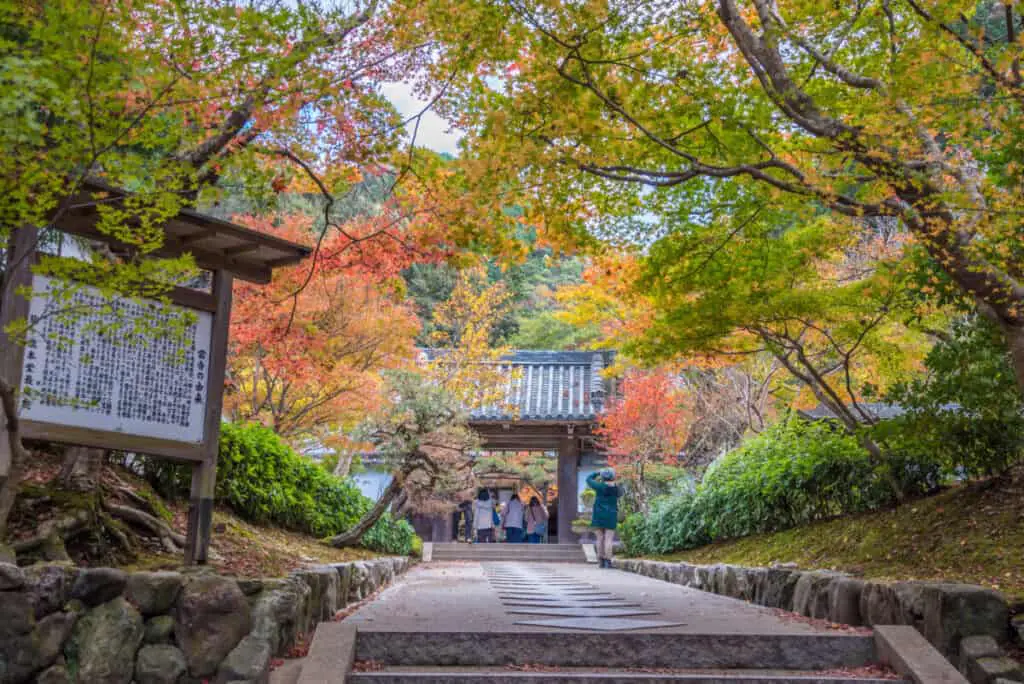
After these efforts failed to remove the ghostly presence, the emperor hired Fumon, a Zen master, in 1290 for help. The priest meditated in the center of the villa and was able to remove the place of its poltergeists.
Kameyama was so impressed by Fumon that he gave half of the villa to the Zen master for teaching purposes.
Transformation into a Buddhist Temple
Eventually, Kameyama gave the whole villa to Fumon and has been the world’s leading Zen Buddhist temple ever since. The story behind the temple, whether real or not, reflects Japan’s political history at the time.
The samurai shogun warriors usurped the government from the emperor. Traditions of royal bloodlines and successions split and changed because of it.
Indeed, it was better for the royal family to use the influence of a priest than from solely under the weight of their heritage or status.
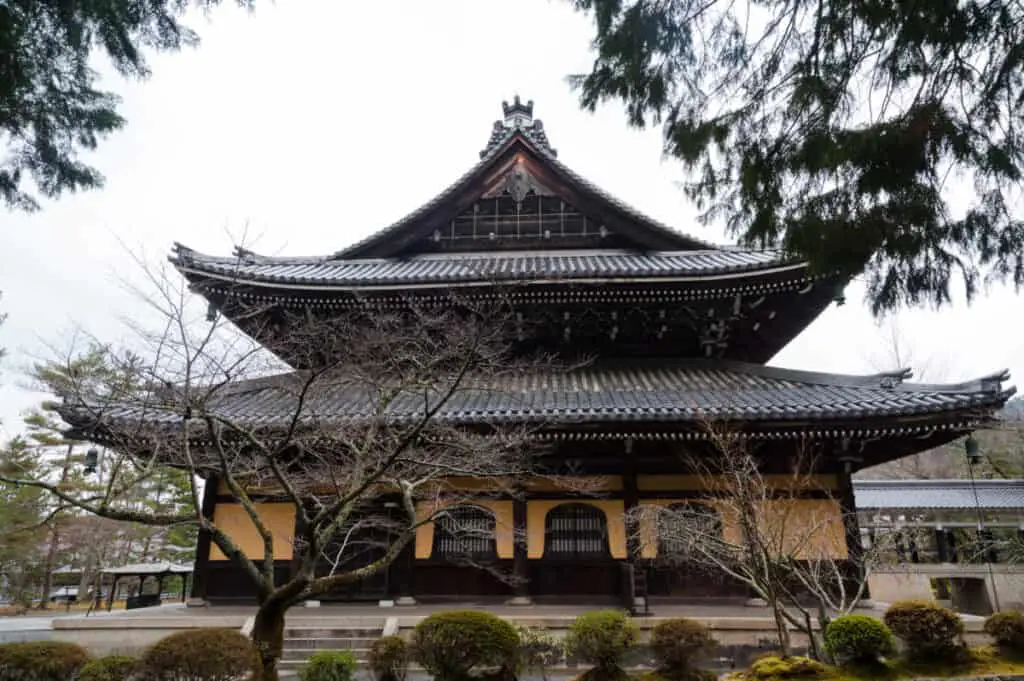
It’s a Symbol of Defiance
When Kameyama gave the villa to Fumon, he did this in conscious defiance of the already-established Buddhist authority.
At the time, the headquarters were at Mount Hiei and they practiced the original form of Buddhism’s introduction from China. Zen is a development that moves away from tradition.
Although Emperor Kameyama fostered what became the Zen movement of Japan, he also started several trends that were integral to customary royal behavior.
For example, shoguns began taking on Zen priests as advisors. These customs eventually resulted in the construction of five more sub-temples under the stewardship and direction of Nanzenji.
Shrouded in a Violent Past
These sub-temples of Nanzenji had their own standing armies. This led the monks of Mount Hiei to march on Nanzenji in 1393 and burn it to the ground.
While it was an icon for elites and common folk alike, the razing of Nanzenji didn’t stop the Zen movement.
Nanzenji actually experienced several rebuilding and destruction events throughout the century. The last restoration was in 1777 and it’s what visitors can see now.
Some of Japan’s wealthiest and most powerful people donate gifts and money to assist with its maintenance and upkeep.
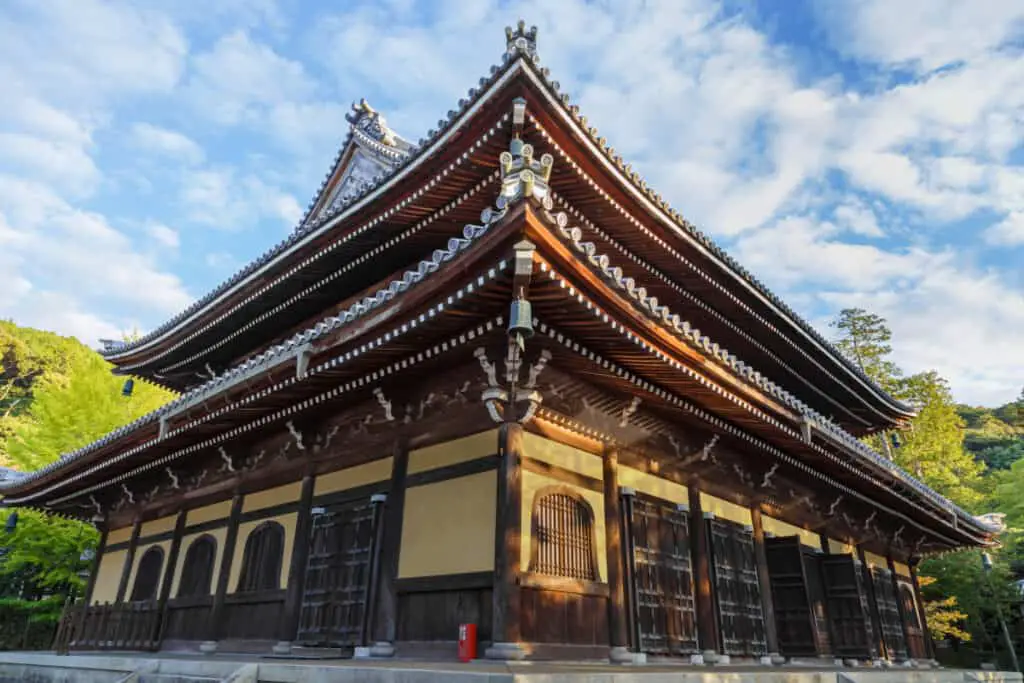
Nanzenji Temple Complex Today
While Nanzenji isn’t the most important of the Five Great Zen Temples of Kyoto, it is one of the most treasured. It sits atop the status structure as the main temple of the Buddhist concept of the Five Mountain System.
This is a Japanese adaptation of the Chinese original. Today, it’s the school for the Rinzai sect.
Because it’s a center of learning for students of Buddhism, not all parts of the complex are open to the public. However, the central temple grounds are free to visitors but there are fees to get inside the sub-temples.
When visitors arrive, there’s the classic Sanmon Gate that reaches up and over the trees. Built-in 1628, it honors the shogun warriors of the Tokugawa clan who died during the 1615 siege of Osaka Castle.
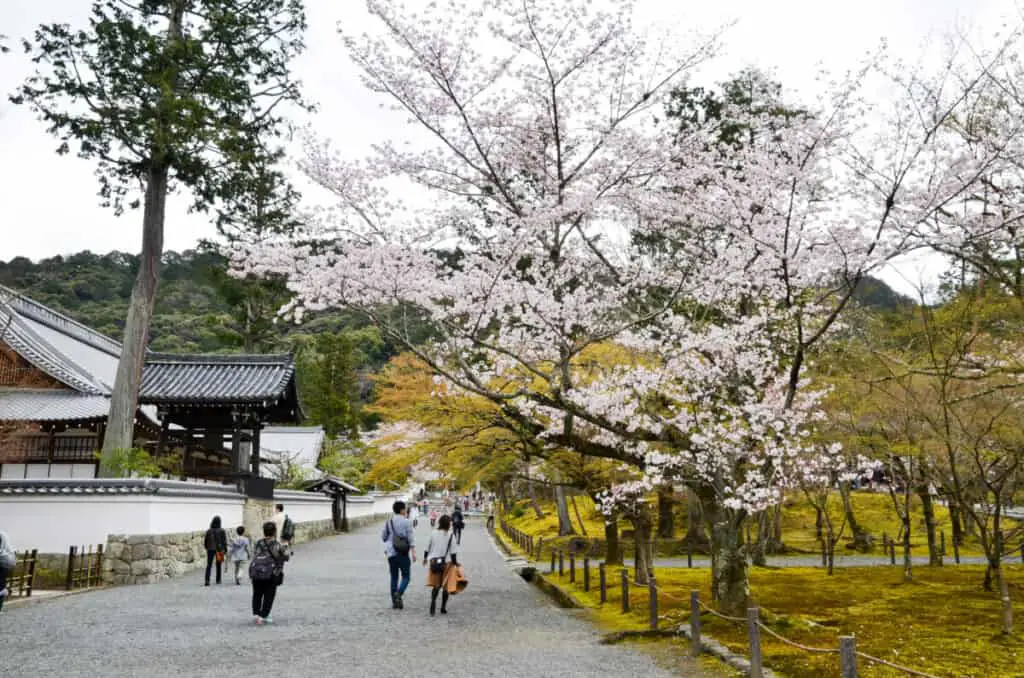
The Sanmon Gate
The Sanmon Gate, meaning “three gates,” is the largest temple entrance in all of Japan. It comprises 100% wood that appears almost black.
This is from centuries of aging and exposure to the elements. The three gates here represent the three paths to liberation in Zen Buddhism.
You can climb a steep staircase up to the balcony-like deck and take in an amazing scene of the city across the way.
The upper deck surrounds the central chamber of the gate. This is home to a Buddha sculpture that has a jeweled crown.
16 arhat statues (or Buddhists who have achieved enlightenment) flank the Buddha statue. These are in a style that goes back to the Indian origins of Buddhism.
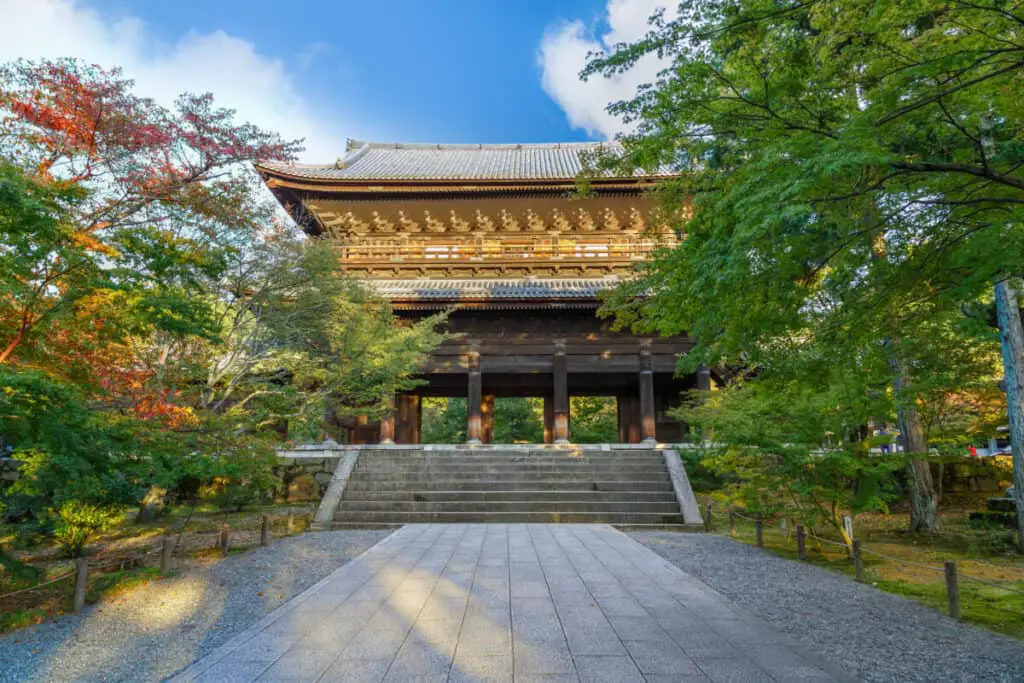
Performance Inspiration
Not only was the view from this gate featured in the modern movie, “Lost in Translation,” it’s also a source of inspiration for many Kabuki performances.
In fact, it’s the famous scene from 1778 about the story of a criminal who spoke of the Gate’s beautiful view but was executed before the current gate’s construction.
The Hatto
At one time there were 62 sub-temples housed within Nanzenji. But, today, there are only about 12 and not all of them are open to the public.
For instance, beyond the Sanmon Gate is the Dharma Hall or Hatto. This is an enormous lecture hall and it is not available for public access.
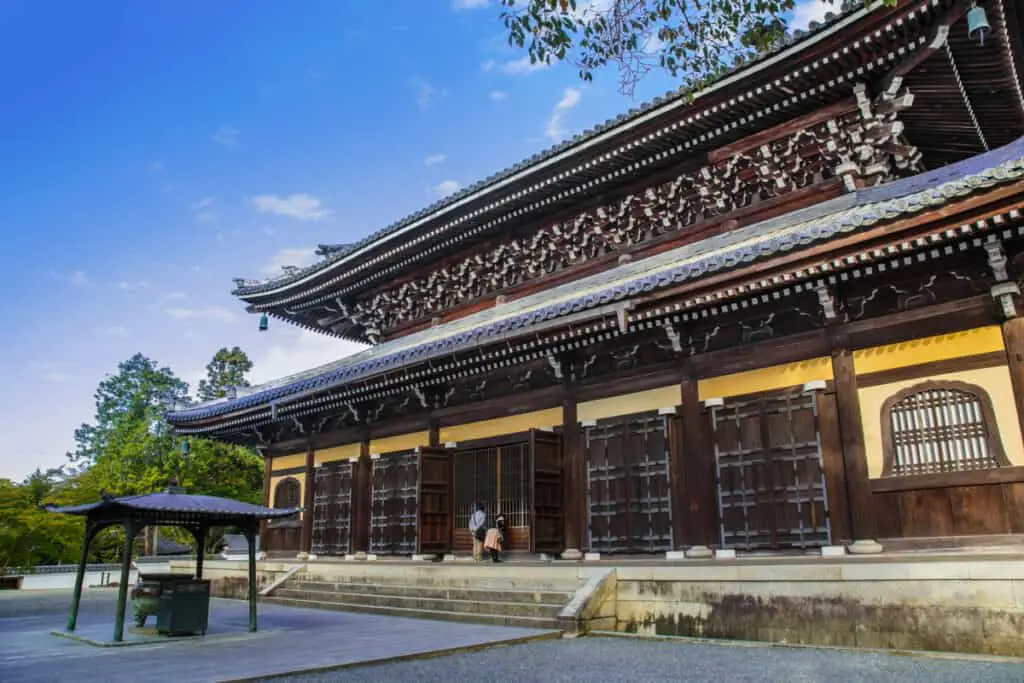
The Hojo
Passing the Hatto is the former head priest’s residence and the temple complex’s main hall, the Hojo.
Part of this came from a grand palace in Fushimi City, donated by Japan’s last shogun. Here is one of the most famous rock gardens, where the rocks resemble cubs and tigers crossing water.
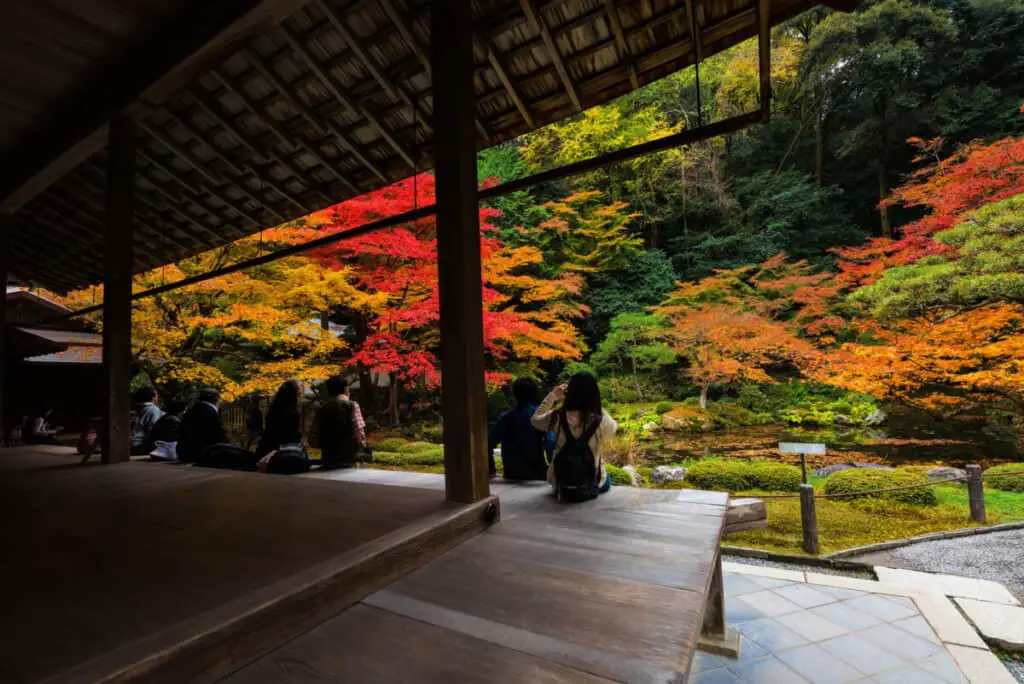
There are also amazing paintings that splay the fusuma, or sliding doors, which have realistic renditions of tigers and leopards on gold leaf.
Other gardens in the Hojo comprise stone, gravel, or mossy-banked ponds. Throughout the Hojo are priceless works of art and objects that people have donated over the years.
Visitors to Nanzenji enter the Hojo through the kuri, or former temple kitchen. There’s also a quaint tea room where people can view a diminutive waterfall.
Outside the Hojo, there’s a large brick aqueduct traversing the whole of the temple grounds.
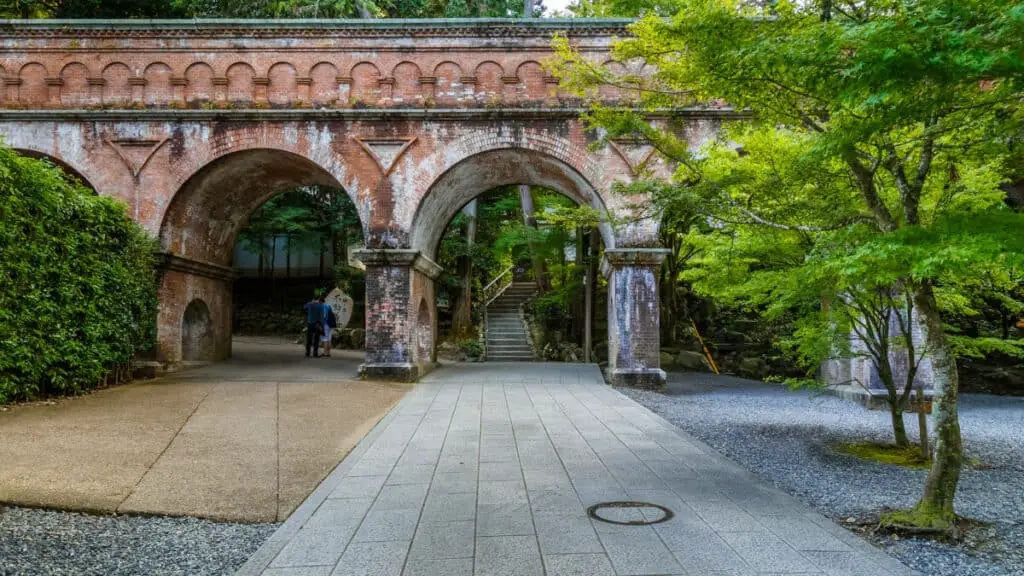
An Impressive Aqueduct
The aqueduct is a part of the canal system constructed during the Meiji Period (1868 to 1912). This carried water and goods between Lake Biwa in the Shiga Prefecture and Kyoto.
There are even paths running alongside the canal leading into the surrounding forest.
Nanzen-ji Temple Official Website
A Brief Exploration of the Sub-Temples
The sub-temples are a sight to behold with something unique and beautiful to explore in each. When visitors come to Nanzenji, they should expect to spend several hours to experience everything that each sub-temple has to offer.
- Nanzen-in Temple: In the heart of Nanzenji, this sub-temple is right behind the aqueduct. It’s the exact spot of where Emperor Kameyama’s retirement villa was. This includes his mausoleum, his statue, a hall and garden with a pond.
- Konchi-in Temple: This sub-temple sits on the edges of the temple complex. Founded in 1400, there are a plethora of structures, sliding door paintings, rock gardens and another small tea house as well as a humble Toshogu Shrine.
- Tenjuan Temple: A short stroll away from Konchi-in is the Tenjuan Temple. Dedicated to Fumon, the Zen master who directly served Emperor Kameyama, it has a main hall, gate and study dating back to the early 17th century. It’s well known for its two rock and pond gardens.
- Chosho-in Temple: At this sub-temple visitors can partake in something a little more ephemeral than at any other place in the complex. People can sample Shojin Ryori, which is an 800 year old form of vegetarian cuisine that’s part and parcel to Zen Buddhist philosophy. It has tatami-covered flooring and they serve lunch daily.










